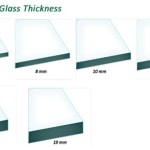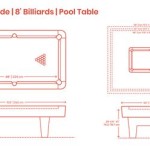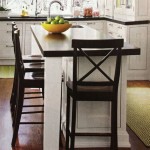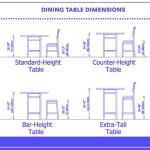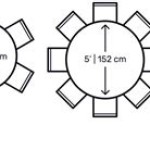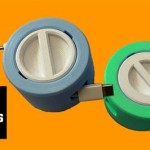Finding the Perfect Retro Kitchen Table and Chairs in Edmonton
The appeal of retro design is enduring, offering a comforting nostalgia and a distinct aesthetic that sets it apart from modern trends. In Edmonton, individuals seeking to infuse their homes with vintage charm often look to the kitchen, the heart of the home. A retro kitchen table and chairs can be a focal point, transforming a functional space into a stylish and inviting area reminiscent of a bygone era. This article explores the key considerations in selecting retro kitchen tables and chairs in Edmonton, encompassing design styles, material choices, where to find them, and what to look for to ensure a worthwhile investment.
Understanding Retro Design Aesthetics
"Retro" is a broad term, and within it lies a multitude of design styles that span several decades. When considering a retro kitchen table and chairs, it is crucial to identify a specific era that resonates with personal taste and complements the existing décor. Common retro styles include mid-century modern, the 1950s diner look, and the vibrant patterns of the 1970s. Mid-century modern, prevalent from the late 1940s to the 1960s, is characterized by clean lines, organic shapes, and a focus on functionality. Tables from this period often feature tapered legs, a simple tabletop, and chairs with smooth curves, upholstered in materials like vinyl or textured fabrics. The 1950s diner aesthetic, inspired by classic American diners, typically incorporates chrome accents, bright colors like red and turquoise, and vinyl upholstery. Tables may have rounded edges and chairs may feature a "boomerang" design or a classic button-tufted back. The 1970s brought bold patterns, warm earth tones, and materials like wood and laminate. Tables might have a larger, more substantial presence, and chairs could feature woven materials or geometric designs.
Beyond these broad categories, there are nuances within each style. For example, within mid-century modern, one might find Scandinavian influences emphasizing minimalist design and natural materials, or Atomic Age designs featuring quirky shapes and futuristic elements. Understanding these distinctions helps to narrow the search and find pieces that genuinely capture the desired retro vibe.
When considering the existing kitchen, it's important to assess the architectural style of the home. A mid-century modern table might look perfect in a house with large windows and open floor plan, while a diner-style set might feel more at home in a smaller, more traditionally styled kitchen. The color palette is another important factor. If the kitchen features neutral tones, a brightly colored retro table and chairs can add a pop of personality. Conversely, if the kitchen already has a vibrant color scheme, a more subdued retro set might be a better choice.
The size of the kitchen also plays a significant role. A large kitchen can accommodate a larger, more substantial table and chairs, while a smaller kitchen benefits from a more compact set. Consider the number of people who will typically use the table. A small breakfast nook might only require a two-person set, while a larger family will need a table that can comfortably seat everyone. Think about the overall layout of the kitchen and how the table and chairs will fit into the space. Be sure to leave enough room to comfortably move around the table and chairs without feeling cramped.
Material Considerations for Retro Kitchen Furniture
The materials used in retro kitchen tables and chairs are integral to their aesthetic and durability. Understanding the common materials used in different eras and their associated benefits and drawbacks is crucial to making an informed decision.
Wood is a classic material that has been used in furniture for centuries. In retro designs, wood is often used for table legs, chair frames, and tabletops. Teak, walnut, and oak were popular choices for mid-century modern furniture due to their durability, warm tones, and attractive grain patterns. Wood can be easily refinished, allowing the furniture to be restored to its original beauty or updated with a new stain or finish. However, wood can be susceptible to scratches, dents, and water damage, so it requires proper care and maintenance. Regular cleaning and polishing can help to protect the wood and extend its lifespan.
Metal, particularly chrome, was a hallmark of the 1950s diner aesthetic. Chrome plating provides a shiny, durable finish that is resistant to rust and corrosion. Chrome is often used for table legs, chair frames, and decorative accents. While chrome is relatively easy to clean, it can be prone to fingerprints and smudges. Regular cleaning with a soft cloth can help to keep chrome looking its best. Powder-coated metal is another option that became popular in later retro designs. Powder coating provides a durable, scratch-resistant finish that is available in a wide range of colors.
Laminate was a common material for tabletops in the mid-20th century. Laminate is a durable, low-maintenance material that is resistant to scratches, stains, and heat. It is also relatively inexpensive, making it a popular choice for budget-conscious consumers. Laminate is available in a wide range of colors and patterns, including wood grain, solid colors, and retro-inspired designs. While laminate is durable, it can be damaged by sharp objects or prolonged exposure to moisture. It is important to clean laminate surfaces regularly with a mild detergent and avoid using abrasive cleaners.
Vinyl upholstery was a popular choice for retro kitchen chairs due to its durability, ease of cleaning, and affordability. Vinyl is resistant to stains and spills, making it a practical choice for a kitchen environment. It is also available in a wide range of colors and textures, allowing consumers to find vinyl that matches their desired retro aesthetic. However, vinyl can be prone to cracking and tearing over time, especially if it is exposed to direct sunlight or extreme temperatures. Regular cleaning with a mild soap and water can help to extend the lifespan of vinyl upholstery.
Finding and Evaluating Retro Kitchen Table and Chairs in Edmonton
Sourcing retro kitchen table and chairs in Edmonton requires a multi-faceted approach, encompassing both online and offline resources. Each option presents unique benefits and challenges.
Antique stores and vintage furniture shops are prime destinations for finding authentic retro pieces. These establishments often curate a selection of furniture from different eras, offering a diverse range of styles and materials. Visiting local antique stores in Edmonton allows for firsthand inspection of the furniture's condition, craftsmanship, and overall aesthetic. However, prices at antique stores can be higher than other sources due to the rarity and collectibility of the items. Thoroughly inspect each piece of furniture for signs of wear and tear, such as scratches, dents, and loose joints. Ask the store owner about the history of the furniture and whether it has been restored or repaired. Consider the store's return policy in case the furniture does not meet expectations once it is brought home.
Consignment shops and used furniture stores offer a more budget-friendly alternative to antique stores. These establishments typically sell furniture that has been gently used, offering a wider range of styles and price points. While the selection at consignment shops may not be as curated as at antique stores, it is possible to find hidden gems at a fraction of the cost. Similar to antique stores, it is important to thoroughly inspect the furniture for signs of wear and tear. Check the stability of the table and chairs, and make sure that all of the joints are secure. Inquire about the store's return policy before making a purchase.
Online marketplaces, such as Kijiji and Facebook Marketplace, provide a convenient platform for buying and selling used furniture directly from individuals. These platforms offer a vast selection of retro kitchen tables and chairs at competitive prices. However, it is crucial to exercise caution when buying furniture online. Carefully review the seller's description and photos, and ask for additional information if needed. Consider requesting additional photos or a video call to assess the furniture's condition remotely. Arrange to meet the seller in person to inspect the furniture before making a purchase. Be wary of sellers who are unwilling to meet in person or who ask for payment upfront. When meeting the seller, bring a measuring tape to ensure that the furniture will fit in the kitchen. Negotiate the price if necessary, and be prepared to transport the furniture yourself.
Estate sales and auctions can be treasure troves for finding retro kitchen furniture at bargain prices. These events often feature a wide range of household items, including furniture, appliances, and décor. Estate sales are typically held when a homeowner is downsizing or moving, while auctions are typically used to liquidate assets. Attending estate sales and auctions requires patience and flexibility, as the selection and prices can vary widely. Arrive early to get a good look at the furniture and to bid competitively. Inspect the furniture carefully for signs of damage before bidding. Be aware of the auction's terms and conditions, including the buyer's premium and payment options. Arrange for transportation of the furniture if you are the winning bidder.
When evaluating retro kitchen tables and chairs, several factors should be considered. The condition of the furniture is paramount. Look for signs of damage, such as scratches, dents, cracks, and loose joints. Consider whether the damage is cosmetic or structural. Cosmetic damage can often be repaired or concealed, while structural damage may require professional restoration. The authenticity of the furniture is also important. If purchasing a vintage piece, verify its provenance and ensure that it is consistent with the claimed era and style. Research the manufacturer and model number to confirm its authenticity. The comfort of the chairs is a key consideration, especially if the table will be used for dining. Sit in the chairs to ensure that they are comfortable and supportive. Consider the height of the chairs in relation to the table. The style of the furniture should complement the overall aesthetic of the kitchen. Choose a style that resonates with personal taste and coordinates with the existing décor. The price of the furniture should be reasonable in relation to its condition, authenticity, and style. Compare prices from different sources to ensure that you are getting a fair deal. The size and shape of the table should be appropriate for the size and layout of the kitchen. Measure the kitchen space and consider the number of people who will typically use the table. Choose a table that is not too large or too small for the space.

Retro Vintage Round Table And 5 Chairs 47 Dia 29 H Consign Design Edmonton

Vintage White Melamine Dining Table 6 Chairs My Stuff S Content And Estate Specialists

Set Of 2 Funky Vintage Kitchen Chairs W Wood Backs And Vinyl Seats Consign Design Edmonton

Edmonton S Most Exclusive Collection Of Midcentury Furniture Objects Ddstudiosloft

Vintage White Melamine Dining Table 6 Chairs My Stuff S Content And Estate Specialists

Furniture Consign Design Edmonton

Vintage Extensible Formica Dining Table By Salvarani 1950s

Furniture Consign Design Edmonton

Vintage Glass Dining Table Metal Frame 6 Chairs My Stuff S Content And Estate Specialists

Vintage Teak Oval Dining Table W 2 Leafs 59 L X 41 5 97 Consign Design Edmonton
Related Posts

